Neuroscience
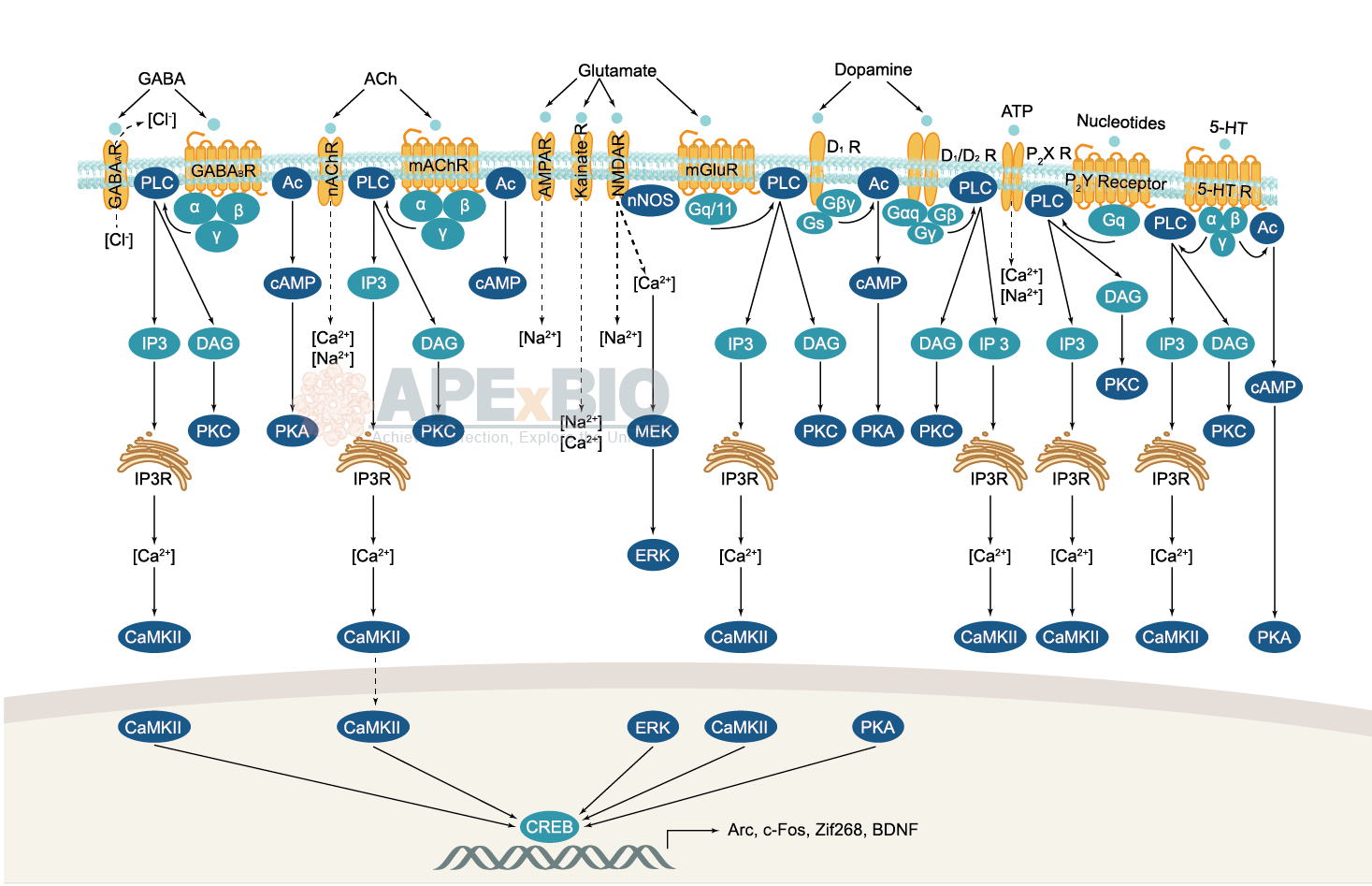
Neurotransmitter receptors function via various G-protein coupled and G-protein independent mechanisms that activate downstream intracellular signaling pathways such as cAMP/PKA, PI3K/AKT, phospholipase A2, and phospholipase C pathways. For instance, dopamine receptors act through adenylate cyclase to activate PKA and other signaling molecules, thereby mediate gene expression through the actions of CREB and other transcription factors. Other neurotransmitters such as NMDAR or AMPAR are associated with ion channels that control flux of Ca2+ and Na+, thus propagating the action potential across the post-synaptic neuron.
Dysfunctions in GABAergic/glutamatergic/serotonergic/dopaminergic pathways result in a broad range of neurological disorders such as chronic pain, neurodegenerative diseases, and insomnia, as well as mental disorders including schizophrenia, bipolar disorder, depression, and addiction.
-
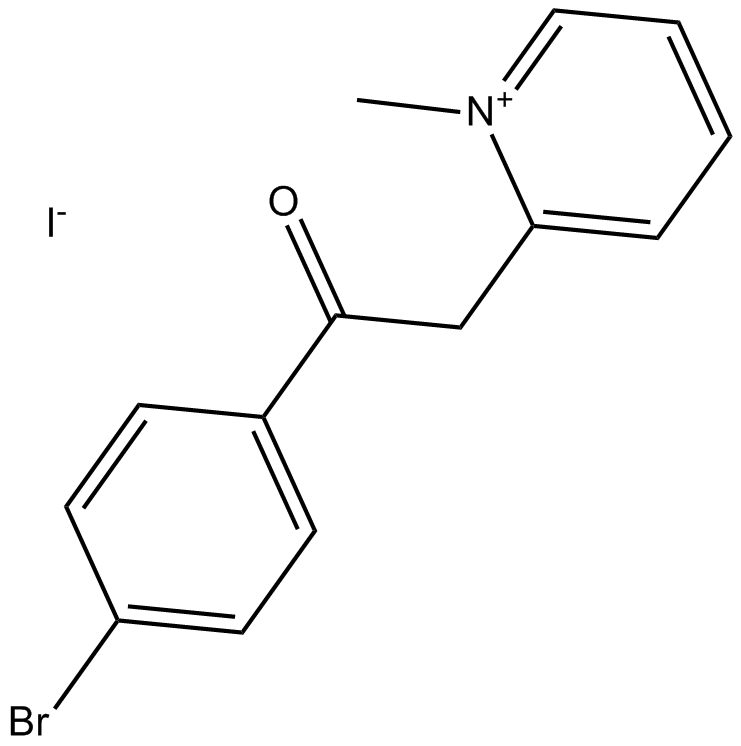 B7418 S 24795Summary: Partial agonist of α7 nAChR
B7418 S 24795Summary: Partial agonist of α7 nAChR -
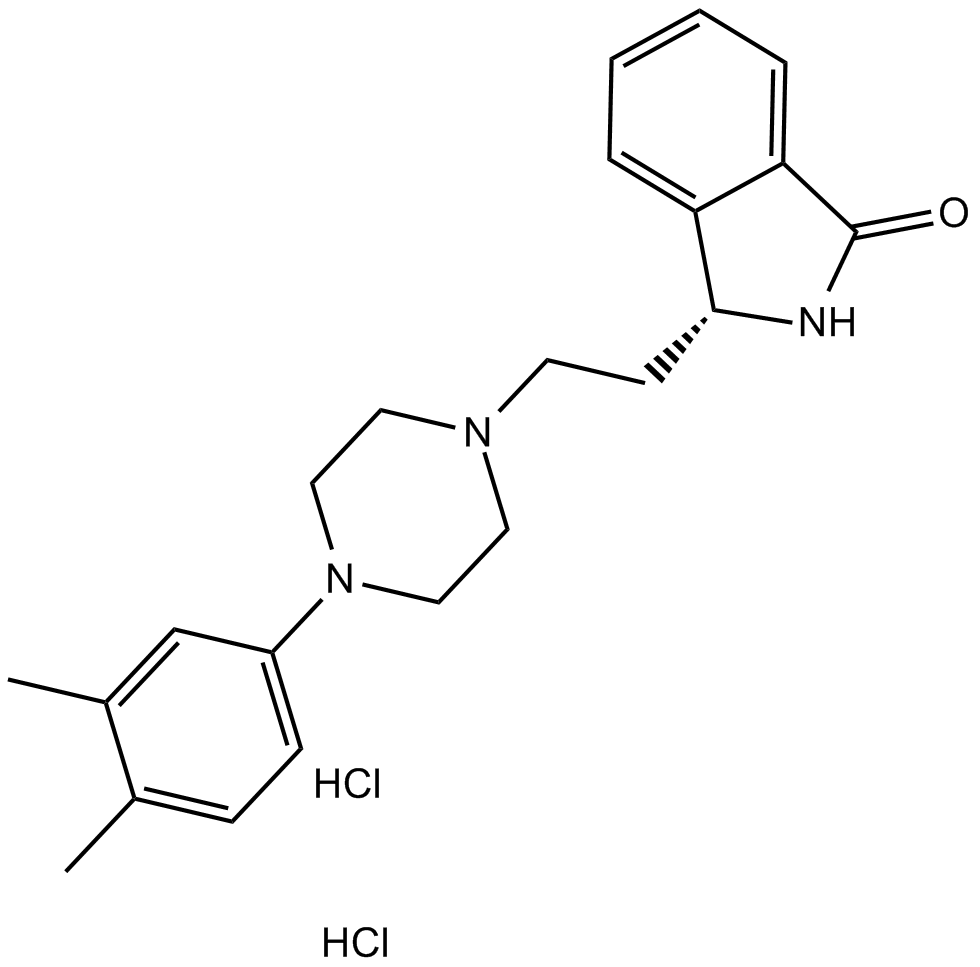 B7420 PD 168568 dihydrochlorideSummary: dopamine D4 receptor antagonist
B7420 PD 168568 dihydrochlorideSummary: dopamine D4 receptor antagonist -
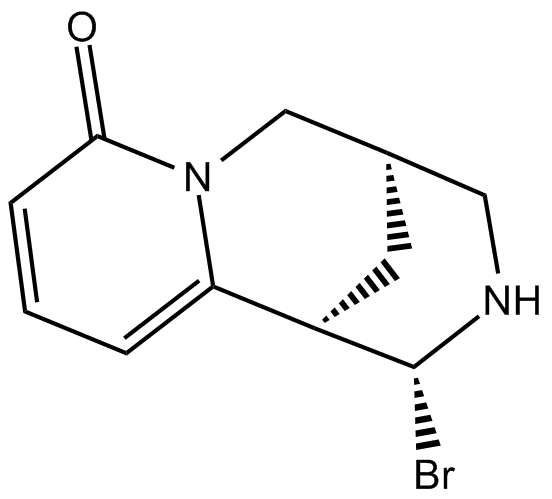 B7423 3-BromocytisineSummary: α4β4, α4β2 and α7 nACh receptor agonist
B7423 3-BromocytisineSummary: α4β4, α4β2 and α7 nACh receptor agonist -
 B7448 VU 0238429Summary: positive allosteric modulator of M5 receptors
B7448 VU 0238429Summary: positive allosteric modulator of M5 receptors -
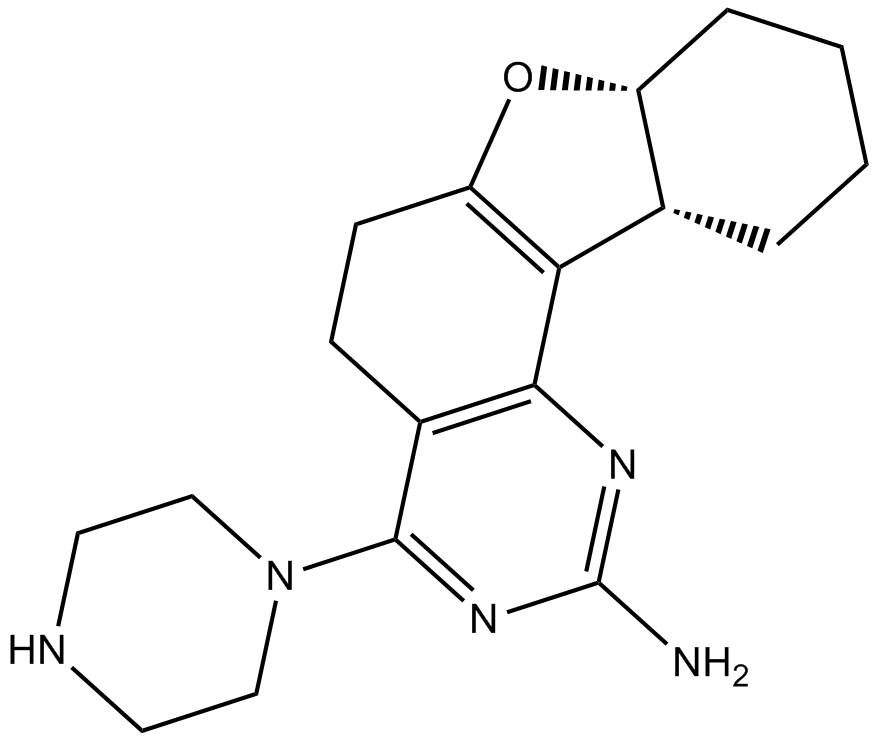 B7451 A 987306Summary: H4 receptor antagonist,potent and selective
B7451 A 987306Summary: H4 receptor antagonist,potent and selective -
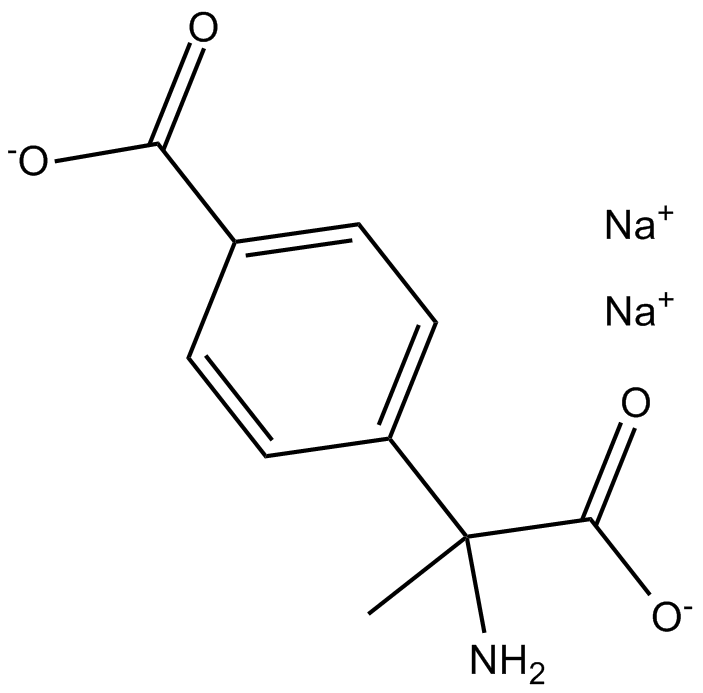 B7476 (RS)-MCPG disodium saltSummary: group I/group II metabotropic glutamate receptor antagonist
B7476 (RS)-MCPG disodium saltSummary: group I/group II metabotropic glutamate receptor antagonist -
 B7487 VU 0255035Summary: muscarinic M1 antagonist
B7487 VU 0255035Summary: muscarinic M1 antagonist -
 B7488 PristimerinSummary: monoacylglycerol lipase (MGL) inhibitor
B7488 PristimerinSummary: monoacylglycerol lipase (MGL) inhibitor -
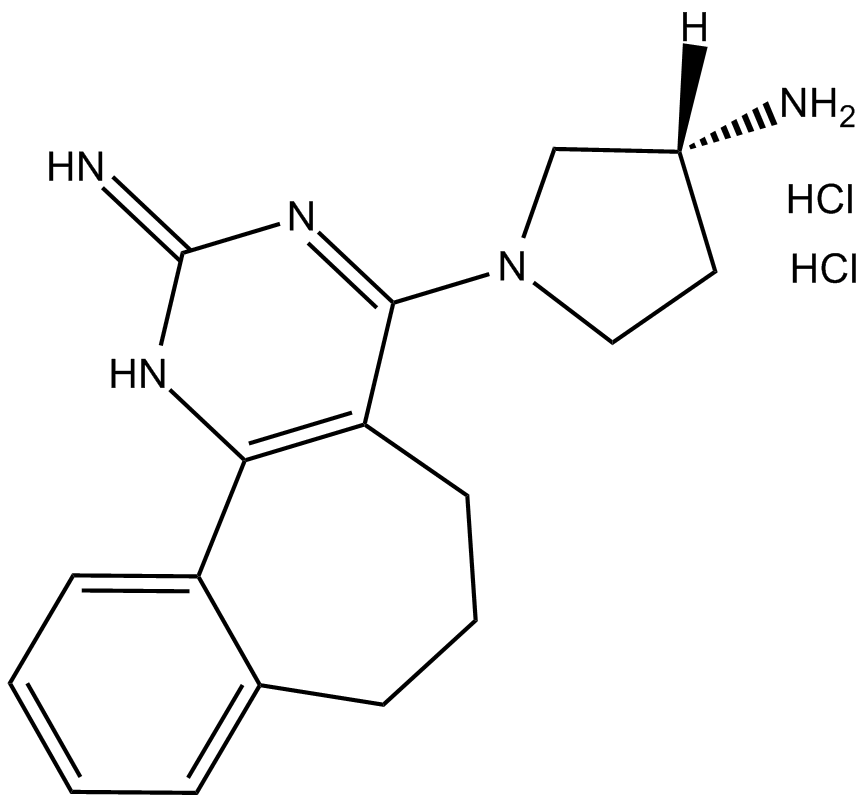 B7495 A 943931 dihydrochlorideSummary: Antagonist of histamine H4 receptor,potent and selective
B7495 A 943931 dihydrochlorideSummary: Antagonist of histamine H4 receptor,potent and selective -
 B7511 CCMISummary: Positive allosteric modulator of α7 neuronal nicotinic acetylcholine receptors (nAChR)
B7511 CCMISummary: Positive allosteric modulator of α7 neuronal nicotinic acetylcholine receptors (nAChR)

